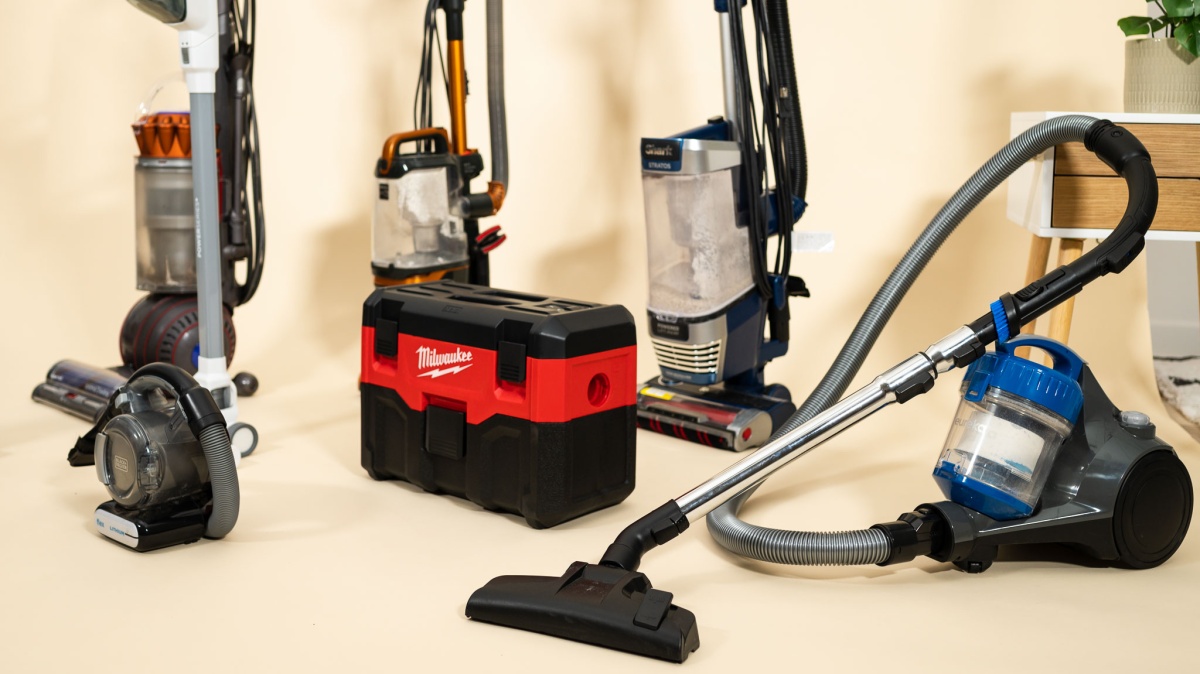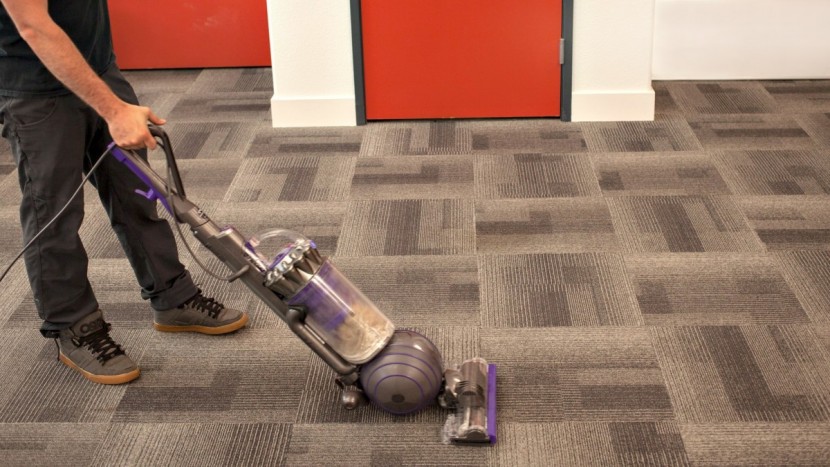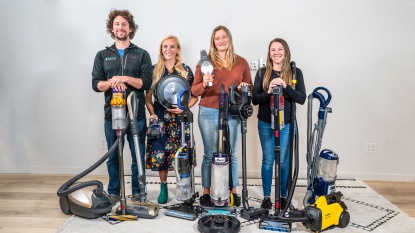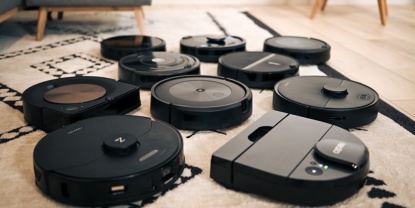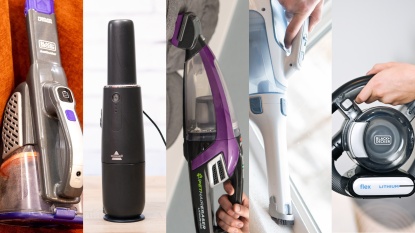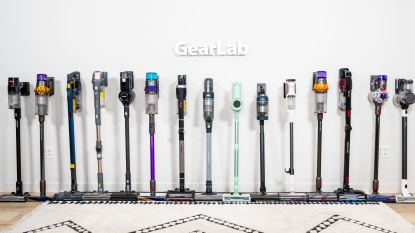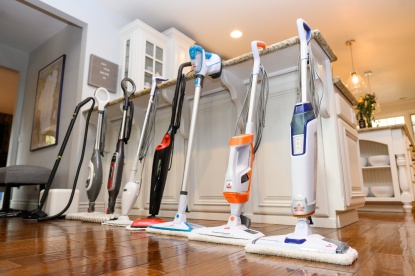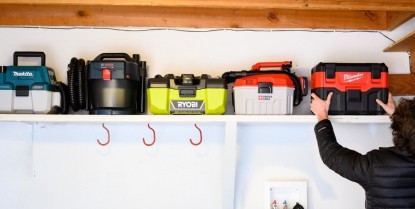Feeling lost when searching for a new vacuum? Confused by canister vs. upright, bagged vs. bagless, or wondering why your vacuum is advertised as having cyclone technology? There is an astonishing array of models available, with prices spanning a huge range. In this article, we break down what to look for and how to narrow down the choice for your next purchase decision, whether you live in a studio apartment or a massive house.
Why Should You Vacuum in the First Place?
The most obvious reason to vacuum regularly is to maintain the aesthetics of your home. Obviously, regular floor cleaning will minimize unsightly dirt, dust, and other debris from your home. Besides keeping your home cleaner, vacuuming can actually increase the life of your carpet, as it can collect particles that would otherwise become trapped in the fibers, slowly abrading them over time and causing your carpet to degrade.
In addition to preserving the life of your carpet and keeping your floors spotless, regular vacuuming can have a substantial impact on ambient air quality. Frequent vacuuming can actually be beneficial to your health by reducing the concentration of airborne dust and allergens in your home, which is particularly important for those with asthma, allergies, or who are susceptible to other respiratory illnesses. Now that we've reinforced — or created — your reasons for getting a vacuum or upgrading from a worn-out model, it's time to start narrowing down the field of possible choices.
Step 1: What Type of Vacuum Should I Get?
Whether you are shopping for a new vacuum to replace your outdated model or are buying one for the first time for a new place, you will notice that there is an overwhelmingly expansive selection of models and types to choose from. Before you pick which model to buy, it's easiest to narrow down your selection to which type would be best suited for your home. To help, we break down the pros and cons of all-around, stick, handheld, and robot vacuums, as well as what they are best used for.
All-Around
Upright or canister, bagged or bagless, these overall powerhouse floor cleaners actually have plenty of variation within this category, which we'll cover in more detail below. These models are corded and have a rotating brush head to free trapped particles from carpet, rather than relying on suction alone. This kind of vacuum is the best bet for most people, with enough power to clean up the majority of messes on all floor types. These usually have a handful of accessories and a hose that can be used to clean cracks and crevices. Prices can be extremely varied, with lower-end models retailing for less than $50 and the higher-end models selling for over $600.
These products can be a bit on the heavy side, particularly if you have to climb stairs with them. In addition, if you have a very small home or primarily hard floors, you might be just as effectively served by a smaller stick or handheld vacuum, or a good ol' broom and dustpan. An all-around vacuum — upright or canister — is what we recommend for typical homes with an average amount of mess.
Stick Vacuum
These smaller models are much less powerful than their all-around counterparts, with some models even cutting the cord and relying on battery power. Stick vacuums are lighter, more maneuverable, and easier to carry up stairs — the perfect fit for someone renting a room alone or living in a smaller place. These models may rely on suction alone or have a brush roll in the extractor head to better clean carpets. The downside to these is they lack the cleaning power of all-around vacuums and they generally don't have the same reputation for durability and warranty. In addition, battery-powered models require you to either be able to clean your house on a single charge or pause for several hours partway through cleaning to let the battery charge. The batteries can also wear out after a few years, requiring service or replacement.
Handheld Vacuum
A handheld vacuum is a cordless model typically reliant on suction alone. Commonly thought of as a DustBuster — the first commercial model of cordless vacuum released by BLACK+DECKER — these products are good for cleaning up small messes on an intermittent basis. They are quick to set up, easy to use, and light enough to carry without too much difficulty. However, don't plan on cleaning a large area with them. Many stick vacuums are offered as a 2-in-1 product, allowing you to lift out the motor and collection bin and switch to using the vacuum as a handheld model for small messes and as a stick vacuum for cleaning the floors.
This kind of vacuum might be a good option if you are renting a single room or want something to augment your existing vacuum to clean up small messes without a lot of fuss.
Robot Vacuum
For those that love gadgets, you may want to consider a robot vacuum. While these products aren't in the same league as an all-around or stick vacuum when it comes to cleaning abilities, these little robots have some distinct advantages. Primarily, they do the work so you don't have to and they can be scheduled to run on a much more frequent basis than you usually vacuum. However, you still need to empty the collection bin on a regular basis and a cluttered home will continually trip up your little 'bot, leaving it stuck until you come to its rescue. These products are best for someone who hates vacuuming and doesn't do it regularly, someone who keeps a clutter-free home without many stairs or steps around the house, or someone who can't seem to find the time to adequately vacuum.
Now, we will continue under the assumption that an all-around vacuum is the best fit for you — as they are the main topic of this review and are the best bet for the majority of people.
Step 2: Upright or Canister?
The first thing you may notice when looking at the selections of vacuums we tested is that there are two distinct types: canister and upright. Upright vacuums are much more prevalent in the US, while canister vacuums are more commonly seen in other parts of the world. We feel that both types can be effective and you will eventually become accustomed to either style. However, there are some distinct advantages and disadvantages to each type.
Upright
This type of vacuum is what typically comes to mind for most people when they think of a vacuum cleaner. These models require you to bend over much less, are a little easier to store with their compact unibody design, and usually have a wider cleaning path than a canister. However, these models have you pushing the weight of the vacuum and can be somewhat cumbersome to carry, especially up stairs. In addition, it's almost impossible to clean stairs with an upright vacuum if it doesn't have a detachable hose and nozzle kit.
An upright vacuum will almost always have a motorized brush head, while some canister vacuums may not, giving a slight cleaning edge to the upright models. This leads us right into why you might want to consider a canister vacuum.
Canister Vacuum
The top canister vacuums have some solid advantages over an upright, but also some solid negatives. These vacuums are essentially split into two parts, with the motor, extraction bin, and filter all in the main body, connected to the cleaning brush head by a hose. The main body is dragged behind you when you vacuum. The form factor of the main body can allow for increased suction power, better sealing, and noise muffling when compared to an upright model. These models are also slightly easier to carry around, especially up and down flights of stairs, as the weight is more evenly distributed between the two halves of the vacuum.
These models can be more awkward to store due to their long cleaning wand and can become caught easier, as both the cord and the hose connecting the main body to the cleaning wand can get snagged. Canister models can also be a little harder on your back, requiring you to bend down much more frequently. However, the cleaning head is usually more maneuverable than an upright model, allowing you to get under desks and around furniture much easier. For example, we found it easier to clean a cluttered office with a canister model but an upright model handled large open areas better and faster.
Regardless of which type you select, both upright and canister models come in bagged and bagless varieties, leading to the next step in selecting the perfect vacuum.
Step 3: Bagged or Bagless?
With cyclonic dust separation technology becoming commonplace, bagless vacuums have become equal to, or even more frequently found than bagged models. This technology uses fluid dynamics and the geometry of the cyclone to separate the dust and debris into the collection container, minimizing the filter clogging. These models can require more extensive maintenance and can release dust and allergens back into the air when emptying the bin. However, they won't accrue as much additional cost as a bagged model, as you don't have to buy bags.
Essentially, you should go for a bagless model if you have tons of debris to clean up all the time (e.g. a constantly shedding dog or an excessive number of fluffy cats), as the cost of repeatedly buying bags can add up quickly. However, you should only consider a bagless model if you are the type of person who will actually follow the manufacturer's directions, cleaning and replacing the filters and other parts on the prescribed schedule. Otherwise, your bagless vacuum will slowly lose suction and deteriorate over time.
Bagged vacuums will maintain similar suction over the life of the vacuum but some will lose suction as the bag begins to fill. However, bagged vacuums are much better at containing dirt and allergens, especially models that have automatically closing doors when the bag is full. For someone who is plagued by allergies or asthma, a bagged vacuum is a superior choice, as throwing away a sealed bag will release far fewer irritants back into the air than emptying the collection chamber of a bagless vacuum. Still, this increased convenience and air quality can come at a cost, with additional bags costing anywhere from $2 - $20, depending on brand and quantity discounts.
Step 4: Need Some Accessories?
Now that you have picked the type of vacuum and made the call regarding bagged vs. bagless, it's time to look at any extra accessories or features that will differentiate these products and maximize their usefulness to you. Any quality vacuum will pick up pet hair but many are marketed specifically for those with pets. These models usually include a specialized tool for removing pet hair from upholstery — something to consider if Fido or Fluffy is constantly shedding on your sofa. Those with tons of small nooks and crannies to clean should make sure their model of choice includes a crevice tool and a detachable hose if it's an upright model.
Finally, those with varied floors in their house should select a model that has an easily adjustable brush head height attachment. You will want to raise the rotating brush to close to its highest setting for fluffy carpet, keeping the hairs from becoming entangled, and drop it down for hard flooring types. Some models may not have an adjustable tool, instead having swappable cleaning heads for different floor types. When you are at the final stages of selecting your new vacuum, it pays off to think carefully about where and what you will be cleaning, and select the model that includes the necessary accessories. In fact, many manufacturers sell the identical vacuum under different model numbers, only adjusting the type and number of attachments and accessories. This allows you to only pay for the things you will use, if you shop carefully.
Conclusion
Hopefully, this guide has helped you narrow down the confusion when selecting a new vacuum cleaner. There are dozens and dozens of models out there with a wide range in price, meaning you should be able to find the best vacuum cleaner to keep your home nice and clean.

